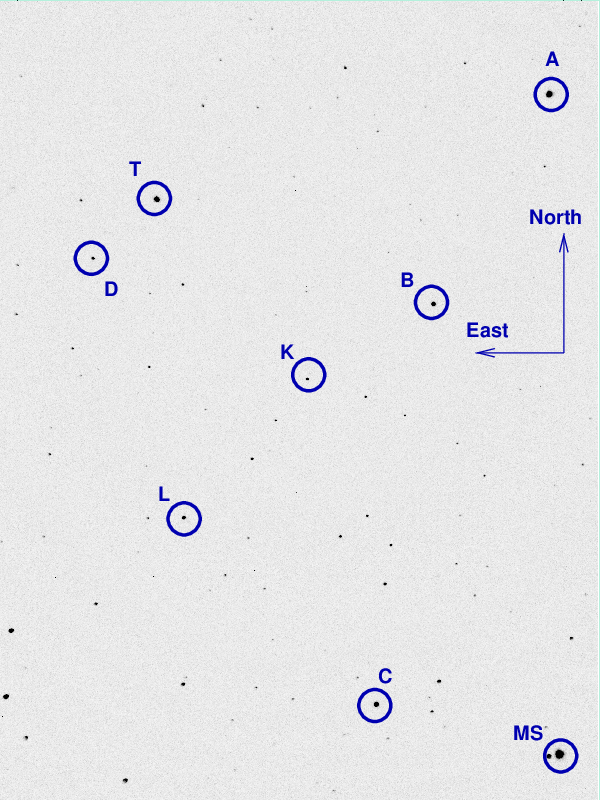
On the night of Aug 25/26, 2024, under very good conditions, I acquired images of the recurrent nova T CrB. This star undergoes outbursts at long intervals of 80 years or so. Its next outburst is predicted to occur soon, perhaps in 2024, and so I've joined the crowd who are monitoring it.
Tonight was clear and dark -- very good conditions. Still no outburst :-(
Near the end of this document is a description of a limited study of the first-order color terms for B and V photometry with this setup.
This recurrent nova brightens from by about 8 magnitudes (!), from V = 10 to about V = 2, around every 80 years. Will we see another outburst this summer?
These observations involved:
It may be a wise idea to focus in V-band early in the evening, then leave it alone as the temperature drops. The V-band images will become slightly worse, but the B-band images will improve a bit.
Notes from the night:
The picture below shows a cropped image of the field of T CrB from Jun 14/15, 2024. The field of view is about 20 arcminutes across.

I've marked the location of several comparison stars, with magnitudes and names taken from the AAVSO's chart.
star name B V
------------------------------------------------------
A 000-BJS-901 11.190 10.566
B 000-BBW-805 11.840 11.187
C 000-BPC-198 13.049 12.336
--------------------------------------------------------------------------
When the target is centered, the finder TV shows this field:
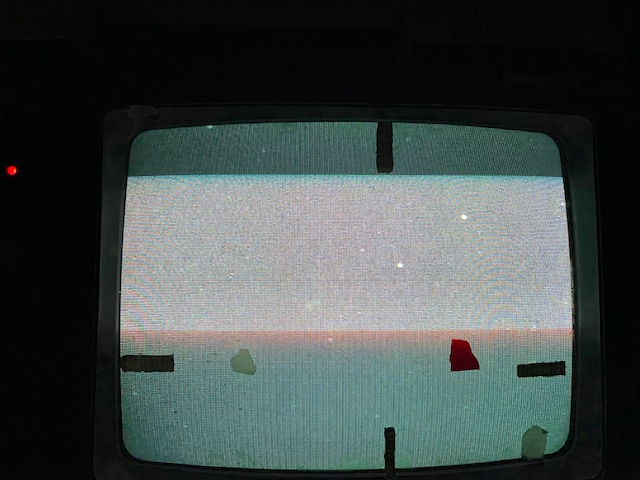
Here's the sky background over the course of the run. A smooth curve indicates clear skies.
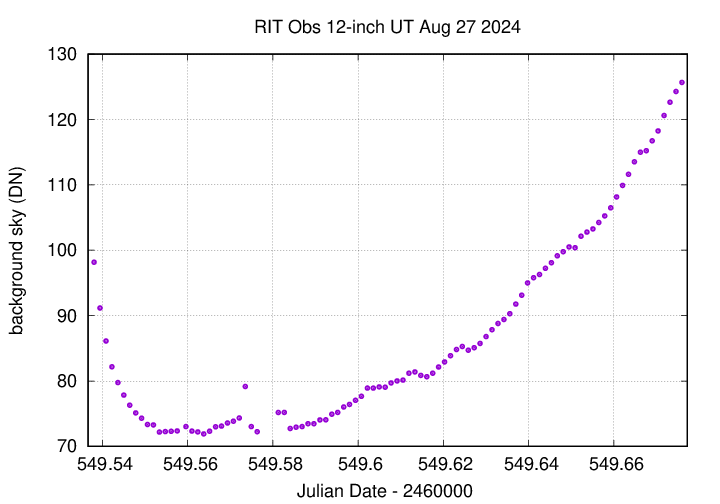
The FWHM dropped slightly when I refocused around 11 PM.
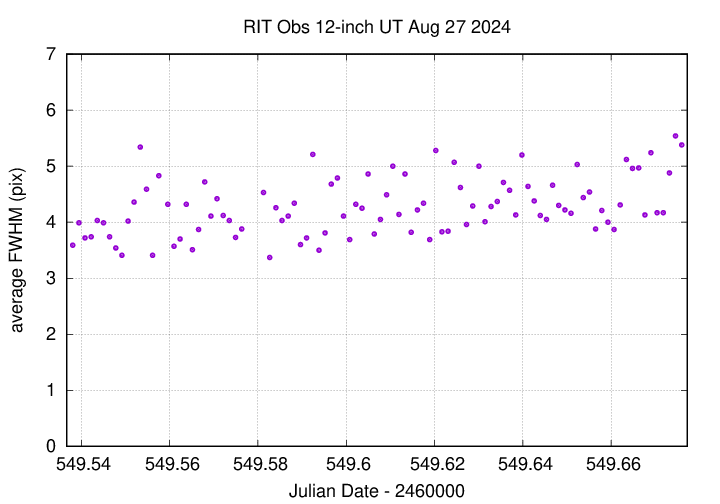
The graph below shows changes in the photometric zeropoint of an ensemble solution of the instrumental magnitudes over the course of the run. Few outliers -- good.
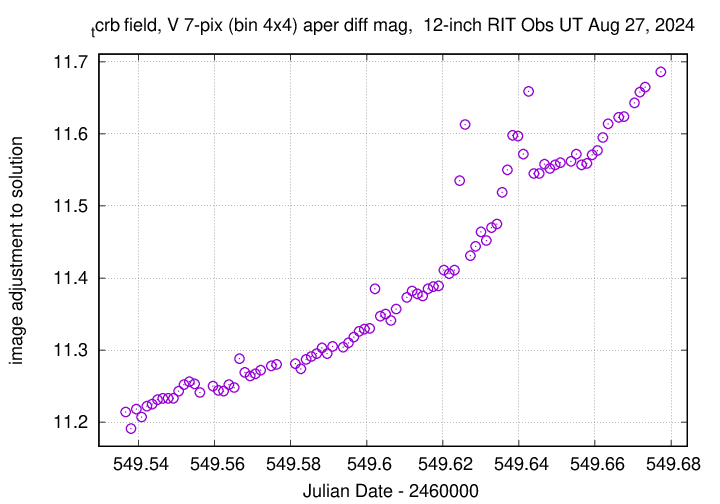
Using aperture photometry with a radius of 7 pixels in V filter (binned 4x4, each pixel is 1.036 arcsec, so a radius of 7.3 arcsec), and 7 pixels in B filter (binned 4x4, each pixel is 1.036 arcsec, so a radius of 7.3 arcsec), I measured the instrumental magnitudes of a number of reference stars and the target. Following the procedures outlined by Kent Honeycutt's article on inhomogeneous ensemble photometry, I used all stars available in each image to define a reference frame, and measured each star against this frame.
Sigma-vs-mag plots show that the floor in V-band was about 0.006 mag; perhaps no smaller due to the large airmass at end of observing run. In B-band, it was also 0.006 mag.
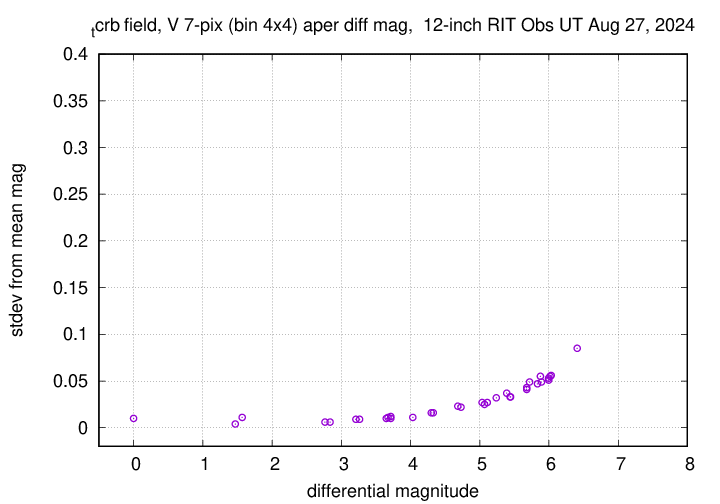
The measurements show that the target is still quiescent.
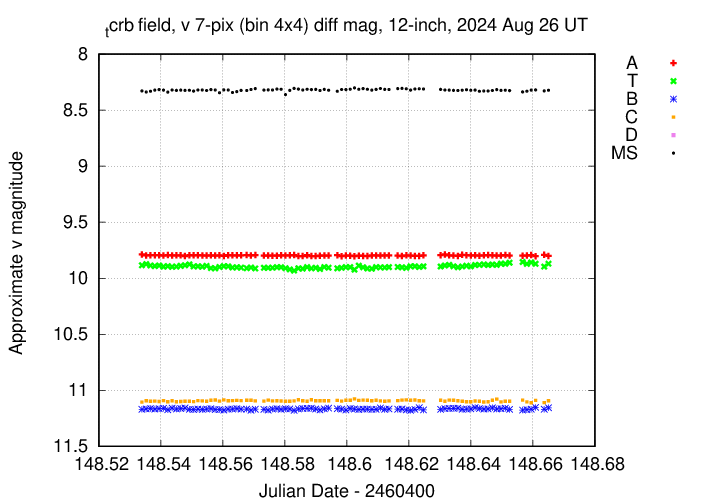

I've submitted these measurements to the AAVSO.
Since I've taken repeated measurements of stars in the field of T CrB, I figured it would be reasonable to use them to check for any color terms in the photometry. This must be a limited study, since there aren't a lot of stars in the field, and the colors cover only a limited range, but it could be useful if I want to apply color terms to my measurements in the future.
I used photometry from the AAVSO for stars in the field; specifically, the stars marked "A", "B", "D", "K", "L" in the chart below.

The AAVSO provides photometry for these stars, which one can find at their Variable Star Plotter. My calculations are based upon the sequence X37093BI which was provided as an update by the AAVSO in this message, sent on July 2, 2024. In particular,
Star B V (B-V)
----------------------------------------
A 10.843 9.809 1.034
B 11.779 11.166 0.613
D 14.765 13.791 0.974
K 14.548 13.477 1.071
L 13.079 12.366 0.713
----------------------------------------
I used measurements from five nights which I listed as being "very good". They are
I made linear fits to the differences between catalog and instrumental magnitudes as a function of stellar color, in two ways:
Here are the numerical values of the color terms:
fitting (B-b) vs. (instr b-v) B = a + b* [ (b-v) - fiducial (b-v) ]
a is 9.372 +/- 0.005
b is 0.367 +/- 0.027
fitting (B-b) vs. (catalog B-V) B = a + b*(B-V)
a is 9.082 +/- 0.017
b is 0.288 +/- 0.019
fitting (V-v) vs. (instr b-v) V = a + b* [ (b-v) - fiducial (b-v) ]
a is 8.360 +/- 0.004
b is 0.078 +/- 0.021
fitting (V-v) vs. (catalog B-V) V = a + b*(B-V)
a is 8.297 +/- 0.014
b is 0.062 +/- 0.016
Graphs of each of these relationships follow.
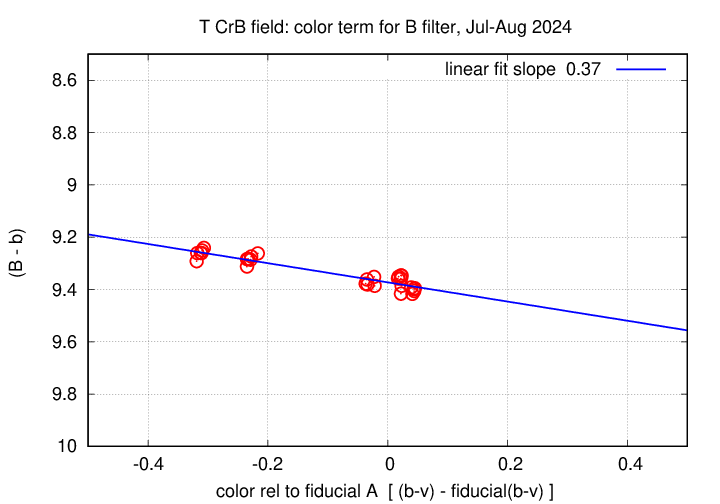


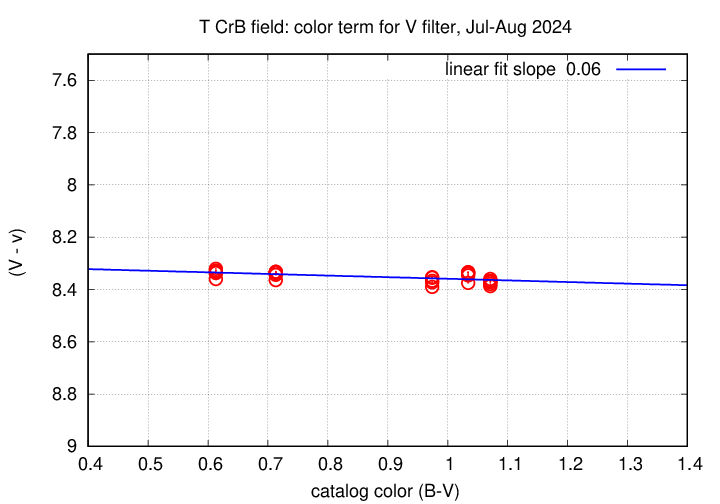
How large are these corrections? Well, the instrumental (b-v) color of T CrB is about +0.3 larger than that of star A, so that means that the B-band correction would be roughly (0.37) * (0.3) = 0.11 mag, while the V-band correction would be roughly (0.08) * (0.3) = 0.02 mag. That's no big deal.
When T CrB goes into outburst, it's likely that it will become much hotter and bluer, perhaps reaching (B-V) = 0.0. Under those circumstances, the corrections in B-band might be as large as about (1.0) * (0.3) = 0.3 mag, but in the other direction.